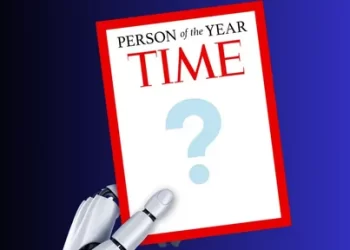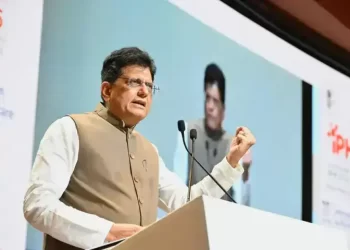PLAN DE AYALA, Mexico (news agencies) — At 4:30 a.m., the girls and women begin to appear in the dark streets of this rural village of Tojolabal people in southern Mexico. They walk in silence. Some are headed to grind corn to make their family’s tortillas. Others fetch firewood to carry home, on their backs or with the help of a donkey. The youngest hurry to finish chores before running to school.
Hours later, it’s still morning, and it’s time to talk. A group of young women and men gathers in a classroom at the Plan de Ayala high school. They’ve come to discuss gender equality and reflect on the role of women in this remote Indigenous community in Chiapas, Mexico’s poorest state.
Jeydi Hernández, 17, wants to be a veterinarian and play basketball, though her first attempt to form a team failed: “There were 12 of us, but my friends got married, and there were only four of us left.” Madaí Gómez, 18, complains that she can’t express opinions in her town: “They think women don’t know anything.”
Two Indigenous women lead the workshop, and dozens attend. Years ago, such an initiative would not have been so well-received, they say. But change is coming — albeit slowly.
Seventy years ago, Mexican women won the right to vote, and today the country is on the verge of electing its first woman president. Yet some of the Indigenous women who will vote in Sunday’s national election still don’t have a voice in their own homes and communities.
In Plan de Ayala and other corners of Mexico, women can’t participate in local government. Men set priorities. They decide how to spend resources: repair the school or the park? Plan de Ayala’s women aren’t even registered residents, even though they are on voter rolls, so its 1,200 men can only guess at the true population.
With no official data, it’s unclear how many communities operate this way. But it’s one of many contradictions for a part of the Mexican population that for centuries has been marginalized. Now, Indigenous women are pushing for change — little by little — with the younger generation often leading the charge.
Of more than 23 million Indigenous people in Mexico — nearly 20% of the population — well over half live in poverty, according to government data from 2022. And women face the worst of it, with the lowest rates of literacy in their communities and little, if any, rights to own land.
Neither of the two women candidates for president — Claudia Sheinbaum for the governing Morena party and the opposition’s Xóchitl Gálvez — have spoken much about Indigenous issues. Still, women in this region can’t hide some hope that a woman president could better address some of their most pressing needs: health care and education access, and protection from domestic violence.
The status of Mexico’s Indigenous peoples leaped onto the international stage in 1994 in Chiapas, when Zapatista guerrilla fighters declared war against the government. They aimed not to take power, but demanded that the government address racism and marginalization suffered by Indigenous peoples. The movement had unusually high participation from women.
Twelve days of fighting and years of negotiation culminated in 2001 with a constitutional amendment that recognized the right of Indigenous people to autonomous government; to preserve their languages, land and cultural identity; and to have access to basic rights such as health care and education.
This allowed many small Indigenous communities to govern themselves and choose their leaders without national political influence. It also meant that the federal government frequently looked the other way when those local customs contradicted basic rights like gender equality.
After the uprising, Indigenous women felt encouraged to fight for their rights in their communities. In some places they succeeded. But poverty and inequality persist in many Indigenous communities.
Juana Cruz, 51, is one of the women on a crusade to bring change. She grew up listening to stories of the abuses suffered by four generations of her family forced to work on an estate where they had to speak Spanish rather than their native Tojolabal, a Mayan-family language. She remembers being beaten in school for not speaking Spanish well.
Today she is one of the most veteran social activists in Las Margaritas, the municipality that includes Plan de Ayala, and director of Tzome Ixuk, which means “organized woman” in Tojolabal. Her collective accompanies victims of domestic violence to report crimes, organizes talks to hear communities’ needs, hosts workshops for men and women about gender rights, and teaches children Tojolabal. Political parties have approached her, she said, but she rejected their recruitment efforts — she wants to focus on organizing and educating in a politically independent environment.
“The ability that we have to decide is because we are not (affiliated) with any authority,” Cruz said.
Six years ago, the Zapatistas and other Indigenous groups elected María de Jesus Patricio, better known as Marichuy, to run for president as their first independent candidate. She faced intense racism and didn’t make it onto the ballot. “But she gave us strength,” Cruz said.
Cruz’s own activism stretches back to the Zapatista uprising, when she first heard about “organizing” for rights. In the mid-1990s, she demanded water, electricity, sewer and schools for an Indigenous neighborhood in Las Margaritas — demands that prompted dozens of men to attack her, she said.
She described politicians finding her demands unacceptable — they believed Indigenous people didn’t need such things.
Since Cruz and others made those basic demands, there’s been progress in places like Las Margaritas, a sprawling township of some 140,000 people spread across about 400 mostly Indigenous communities, including Plan de Ayala. Some people here were born on hugemassive estates where Indigenous workers were treated like slaves. Today, many get by with money sent from relatives who’ve made it to the United States.









